Who Was Missing at the Signing of the U.S. Constitution in 1787?
These two paintings don't show the large support team backstage
Probably the earliest picture of the Constitutional Convention in Philadelphia in 1787 was painted sixty-nine years later by Junius Brutus Stearns.
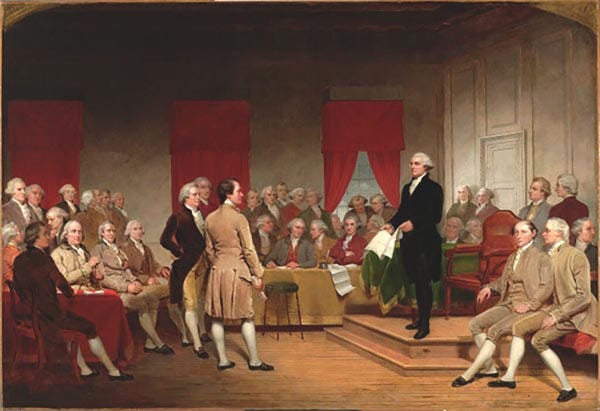
Another, painted by Howard Chandler Christy in 1940, has different details such as green drapes, a chandelier, flags, and gestures by the men. You can almost hear the noise in the room.
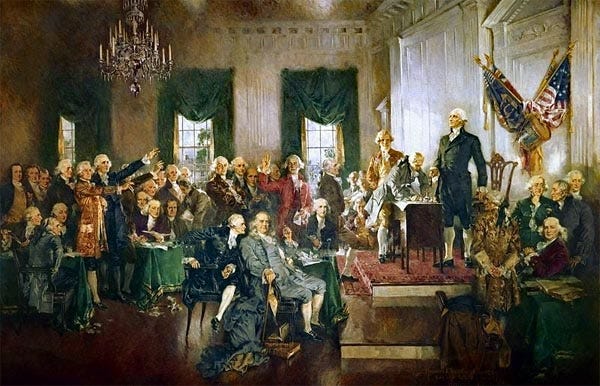
The diagram below identifies the delegates who on September 17, 1787, signed the Constitution, our nation’s lawful foundation.
But there were other Americans who were not present that day, who were closely involved in the great debate.
Thomas Jefferson and John Adams were in Europe on diplomatic missions. John Dickinson of Delaware was ill, and authorized his fellow delegate George Read to sign for him.
During the four months of meetings, many of the original delegates left the Convention for different reasons; only 39 signed their names.
Also, George Mason and Edmund Randolph of Virginia, and Elbridge Gerry of Massachusetts did not sign, either because they wanted a Bill of Rights (Mason and Gerry) or more checks and balances (Randolph).
Where were the women? The North Carolina delegation included William Blount, whose wife, Mary “Molsey” Grainger, was the granddaughter of one of the founders of Wilmington, NC. When her husband was appointed by George Washington to be governor of Tennessee, Mary did not want to leave her home state. But she went, and was William’s social hostess at the home they built there.
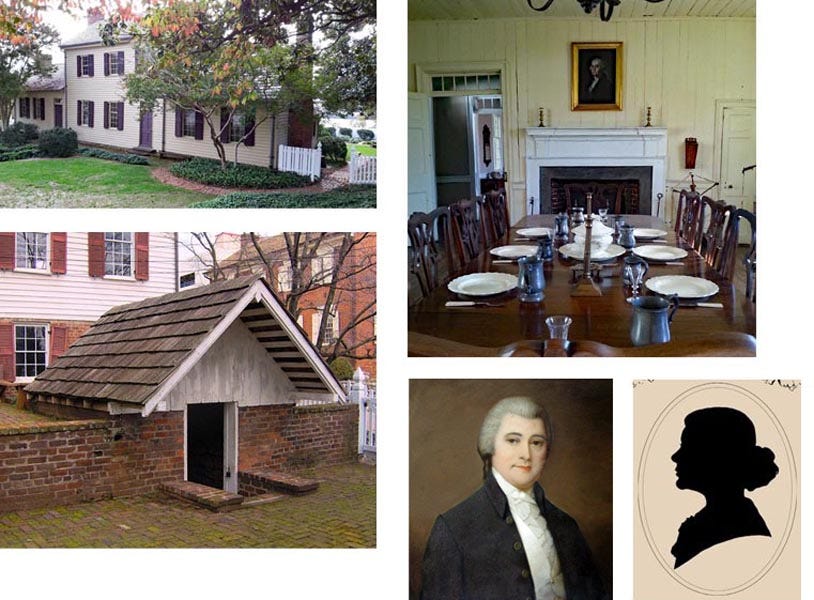
Also from North Carolina was Richard Dobbs Spaight, whose wife was Mary “Polly” Jones Leech. She is remembered for having led the first minuet with President Washington at the 1791 Palace Ball in New Bern, and as the first lady while her husband was governor. In 1802 William was killed in a pistol duel by his political opponent, John Stanley, a 28-year-old Federalist whom Spaight publicly called “both a liar and a scoundrel”.
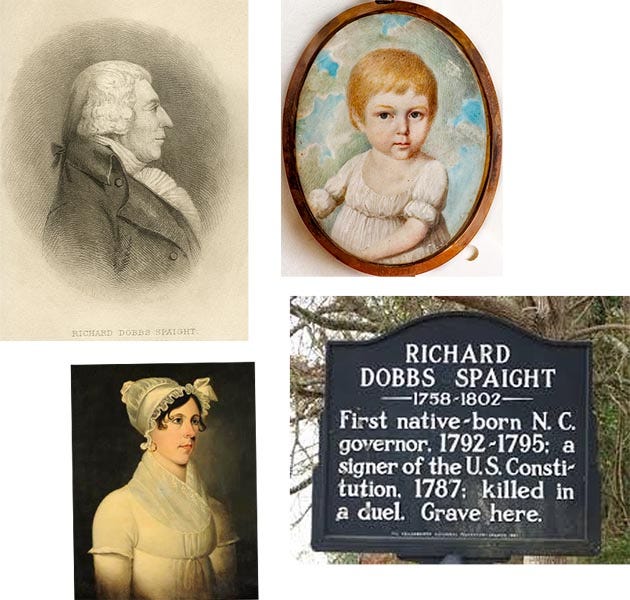
No women attended the Convention meetings, although the wives of delegates Edmund Randolph and Elbridge Gerry visited Philadelphia at the time. Most of the men had wives or daughters back home, who were looking after their property or business. The delegates took an oath of secrecy, so it’s not likely that the women were informed by letter of the Convention debates.
After the signing of the Constitution, it was a woman, Elizabeth Willing Powel, who asked Benjamin Franklin,
‘Well, Doctor, what have we got, a republic or a monarchy?’ Franklin replied, ‘A republic, if you can keep it.’ …
Hosting delegates at their home, Elizabeth Powel and her husband—soon to be mayor of Philadelphia—were at the center of social life during the convention.
[Indirectly, through social gatherings,] women influenced the framing of the Constitution. Language was included in the final document that—while it did not allow them to actively participate—did not shut women out of citizenship and future discussions.
Mercy Otis Warren was a published, outspoken commentator and historian at a time when women were expected to be in the background.
As a Jeffersonian Republican, Warren took a firm stand against ratification of the Constitution, which put her at odds with her conservative political friend, John Adams, a champion of the document.
Likely based on her personal experiences, she opposed women’s lack of access to formal education.
There is one particular person who was indispensable to the delegates, and to our nation. For the sum of $30 (about $750 in today’s dollars), a clerk and calligrapher named Jacob Shallus handwrote the document.
His effort consisted of copying the Constitution on four sheets of parchment made from treated animal skin (calf, goat, or sheep) and measuring 28-3/4 inches by 23-5/8 inches, probably with a goose quill and with ink made of iron filings in oak gall that was black when applied but that has now turned brownish.
Shallus “engrossed” the entire document except for the list of states at the end of the document, which are in Alexander Hamilton’s handwriting.
Shallus made a few mistakes.

And where did the Constitutional delegates eat their meals? The City Tavern!
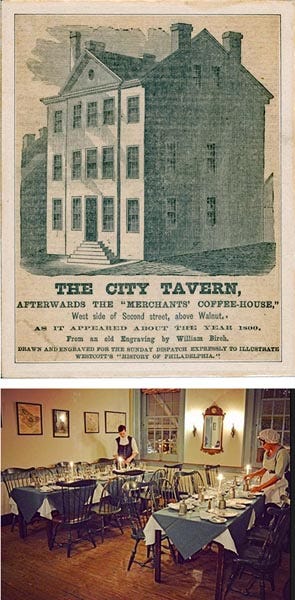
An article from the George Washington Foundation quotes Washington’s personal journal; September 14, 1787:
‘Friday 14th. Attended Convention. Dined at the City Tavern, at an entertainmt. given on my acct. by the City light Horse. Spent the evening at Mr. Meridiths.’
Washington returned to the Convention and by the end of the day after the party, the delegates had finished. Copies of the document were ordered, and two days later they signed the Constitution of the United States, on Monday, September 17, 1787. Washington stated in his journal:
‘The business being thus closed, the Members adjourned to the City Tavern, dined together and took a cordial leave of each other.’
The article goes on to say,
What happened that night at City Tavern? Unfortunately, no bill [of food items ordered] from this night survives to give us any clarification, but Washington provides a hint of just how much steam the delegates needed to blow off. The entry in his journal says that he returned to his lodgings and:
‘retired to meditate on the momentous wk. which had been executed, after not less than five, for a large part of the time Six, and sometimes 7 hours sitting every day, sundays & the ten days adjournment to give a Comee. opportunity & time to arrange the business for more than four Months.’
And yet -
in these treasured paintings that record the debate of big ideas in our nation’s history - where are the everyday men and women, the servers in the City Tavern, the immigrants, the small farmers, the African American slave families; the citizens who would honor the lives of Native Americans, who desired only a life of health, well-being, and peace, and who weren’t callously land- and money-hungry? Where are basic human freedoms, and opportunity for all?
The Bill of Rights and Constitutional Amendments came later.
And yet.
Almost five years later, on January 18, 1792, one delegate from Virginia still seemed to carry the weight of the task. James Madison said about the Constitution of the United States,
Every word … decides a question between power & liberty.
Today, on Constitution Day, Wednesday, September 17, 2025, Madison’s warning seems to have been spoken only yesterday.



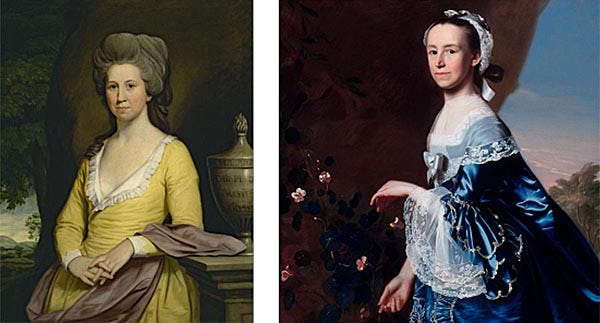

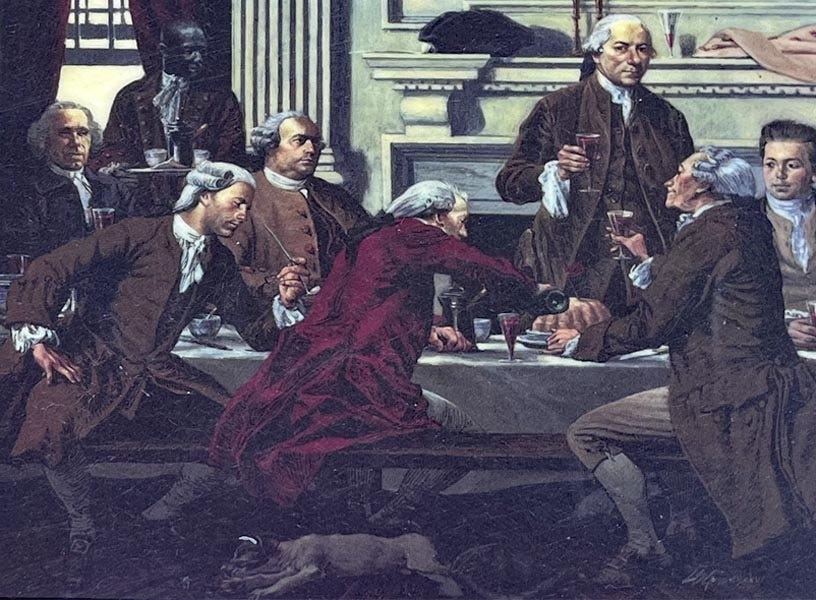
I hope we can keep it, our republic, our representative democracy. I am so grateful for the hard work the men and women did at our nation's naissance and I have believed that our country has been on a path toward a more perfect nation. I have hoped to see strong evidence that "The arc of the moral universe is long, but it bends toward justice.” One of my children was assigned a book by Jean Fritz called The Great Little Madison, he liked it and was able to share such interesting facts that I also read the book and began thinking more about the Constitution. Thank you for this.
But all I really wanted to say was that my great-grandfather cut a jigsaw puzzle using a calendar reproduction of the Howard Chandler Christy painting. I have put that puzzle together several times over 60 or so years.
WOW, Deda. This is an impressive piece of work. Thank you. Maybe you and HCR can hook up one day!